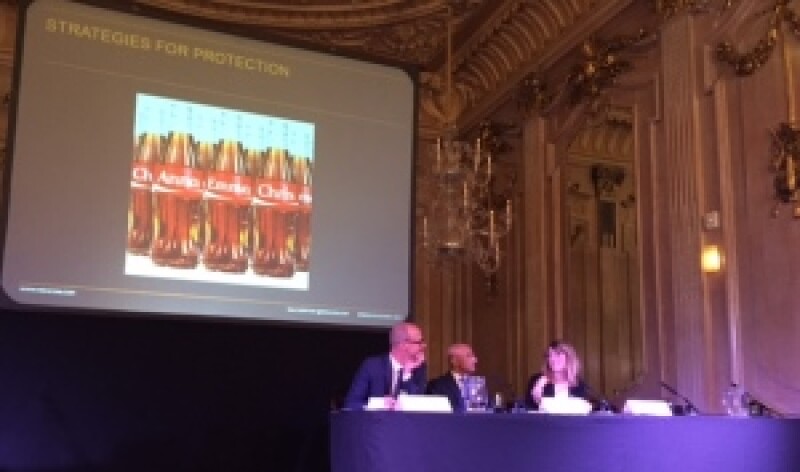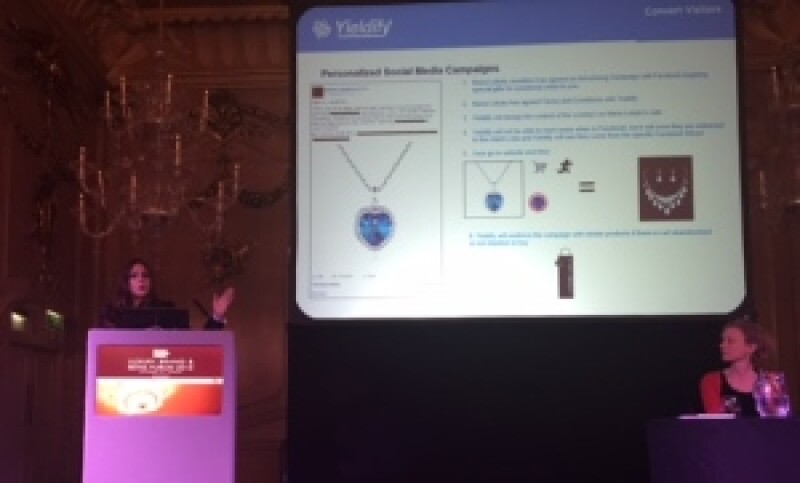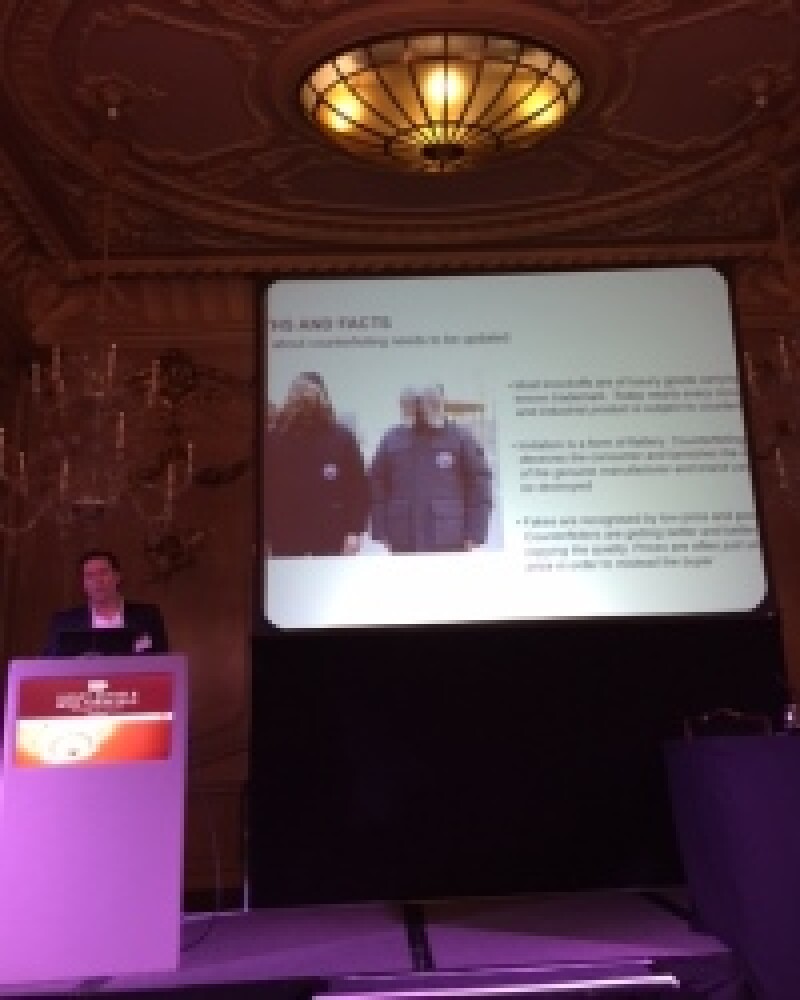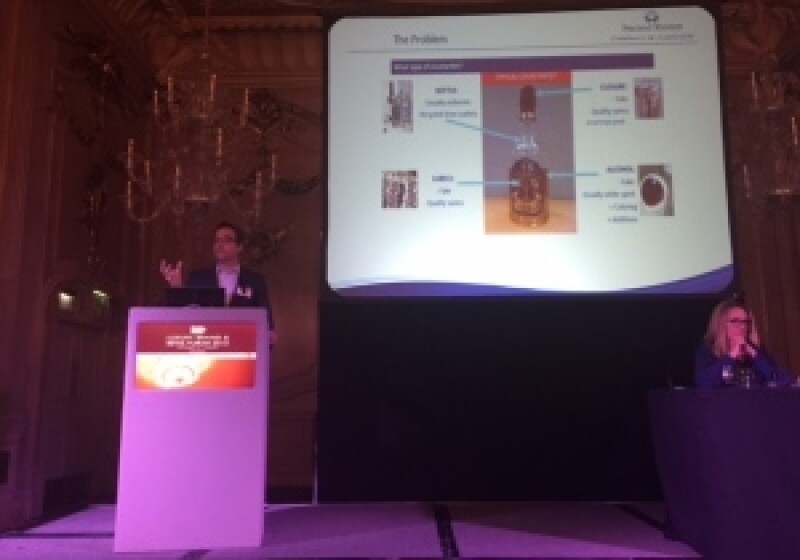What is a luxury brand?

Speakers were nor afraid of asking the big questions. Duncan Hinnells of Aston Martin kicked off the day with an attempt to define luxury. Noting that luxury brands have blossomed despite the global downturn, he noted the importance of authenticity, consistency, personal interaction and the experiential nature, but also highlighted the trend towards more dialogue with consumers, and less paternalism and the tensions between popularity and exclusivity and between online and physical – all topics that came up later in the day in discussions about social media and new technologies. Kevin Mutch of Faberge picked up the theme in his presentation, asking the audience what luxury meant to them, and noting how there are different perceptions among different groups.
A bag full of clubs

Design rights attracted a lot of interest among both speakers and audience. Amarjit Purewal of Marks & Spencer talked about having an “armoury of IP rights” including different trade marks, designs and unregistered rights protecting each product. “You want to have various golf clubs in your bag,” he added. Sally Britton of Mishcon de Reya, who discussed the recent Kit Kat decision from the CJEU (pictured above right), compared IP protection to a Venn diagram, with trade marks, copyright, registered and unregistered designs all overlapping. Emily Weal of Keltie expanded on the challenges of both protecting and clearing design rights, and showed some data suggesting that registered Community designs are “more sturdy than you might think”.
Can your brand survive contact with the public?
Alexia Willetts of Wistla and Hope Shovein of Brooks Kushman offered some useful and entertaining examples of the pitfalls that can arise when using Twitter, Instagram, Facebook and hashtags, and what role trade marks can play. Above all they noted that while it is vital to secure and control relevant handles and hashtags where possible (which may be easier than you think), ultimately dealing with these challenges “goes beyond legal”. As Willetts said: litigation is only one option, and it may be prudent to consider whether the tone of your cease-and-desist letter is appropriate before hitting “Send”. A new threat could be posed by Facebook’s newly announced “Dislike” button: how should brands react if users start “disliking” their Facebook profiles?
Virtual brands

If social media is today’s challenge, tomorrow’s could be virtual reality. Purewal described how Marks & Spencer now has virtual rails, virtual showrooms and virtual closets, and also offers customers a virtual makeover. The bridging of bricks and clicks was another theme of the day, with Anthony Barratt of Vertu noting the two-pronged challenge it has faced from physical stores and websites in Russia – though he emphasised that it has been successful in reclaiming domain names, including one that had been registered to the Kremlin.
Keep up with the counterfeiters
“Counterfeiters are getting better at duping us,” stated Daniel Bennett of Yellow Brand Protection (right), which has handled 3 million anti-counterfeiting actions in the past few months. In particular, he emphasised how they are becoming more skilful at using online sales channels (including social media, auction sites and apps) and pitching their pricing to confuse customers. “We see a very large number of issues for luxury brands,” he added. But, he said, by taking a long-haul rather than project-based approach, it is possible to tackle online abuse – and cited examples of brands that have reduced counterfeit listings by 80% in a year. Nick Kounoupias of ACID added that luxury brands “are not special” and do not face “a unique problem” as criminals don’t distinguish between industry sectors. He encouraged brand owners to work across industries to tackle counterfeit sites and ISP liability.
Technology can be your friend

A ray of light in the anti-counterfeiting fight was provided by Mathieu Prot of Pernod Ricard (left), who explained the success of its strategy of putting QR codes on bottles of spirits in China, along with an advertising campaign. The approach has had the double success of cutting counterfeits out of the market and building brand loyalty. “In the past we have been afraid of highlighting counterfeiting,” said Prot. “But now we are turning a threat into an opportunity and improving the consumer-brand relationship.”
Is collaboration the future?

Aaron Parker and Daryl Penny of Finnegan wrapped up the day with a fascinating discussion of the boom in wearable technology, and in particular the issues raised when a luxury brand combines with a technology company (a few examples include Apple/Hermès, Tag Heuer/Google/Intel, Fossil/Intel and Guess/Martian Watches). The past few years have seen thousands of patent applications in this area, leading to a “complex patent landscape” said Parker. It’s therefore important to be aware of what your competitors, individual inventors and patent trolls are doing in this sector. So, after trade marks and designs, could patents be the next battlefield for luxury brands?
Click here for speaker, agenda and venue details of this year’s Luxury Brands & Retail Forum. Managing IP hopes to bring the Forum to other cities next year, starting with New York.








